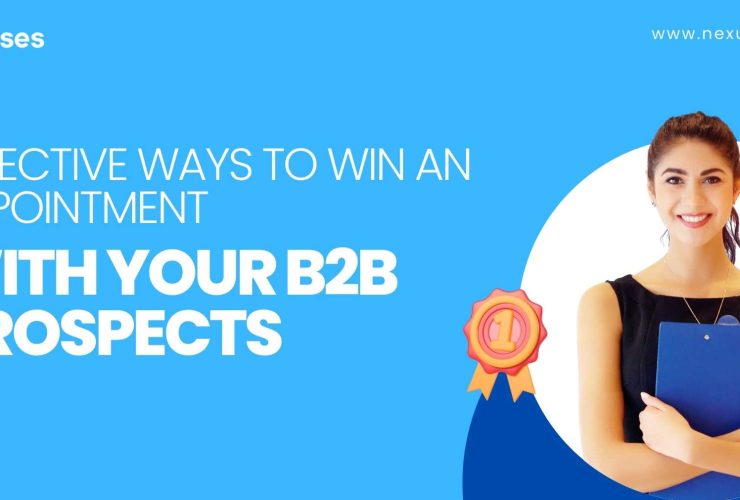
Looking for strategies to demand generation marketing?
One of the biggest challenges for today’s businesses is creating demand for products/services.
Demand generation aims to find and identify potential prospects based on their initial behaviour and guides them through a nurturing process so that the business receives highly-qualified leads.
Trying to end the game? Better conversations between buyers and sellers, which leads to higher conversion rates and more closed deals.
In this article, we will go over:
What is demand generation?
Demand generation is a phrase for sales and marketing initiatives that mostly rely on inbound techniques to drive interest and awareness for an organization’s products/services. It’s activities often cover the full range of the customer journey from prospecting to brand advocacy.
All businesses should pay attention to their demand generation strategy because, when done properly, it creates a pathway for business growth.
In today’s marketing environment, where customers tend to seek information from a wide variety of touchpoints, it is critical for any organization to provide the right information, to the right target audience, and at the right time. Gone are the days where forcing demand or using trickery to make quick sales are practical strategies that sales and marketing can use.

Demand Generation vs. Lead Generation
It is not rare to find marketing professionals interchangeably using lead generation and demand generation but, there is a difference.
Demand generation revolves around strategies to establish awareness, build a trustworthy brand, create interest through various methods (content creation, Video marketing ), support validation, and mitigate customer evaluation.
Lead generation has a more narrow focus and is a subcategory of demand generation. Lead generation mostly focuses on gathering information from leads, qualifying the leads, and converting the targeted audiences into high-quality customers through nurturing. Lead generation activities primarily focus on the Top of the Funnel ( TOFU )
The pragmatic and holistic approach for businesses is to convert leads into customers, their strategy must include both demand generation and lead generation tactics.
- Lead generation tactics to find highly qualified leads
- Demand generation tactics to provide information to the leads at every stage of their journey into becoming customers and beyond

Top Demand Generation Strategies for B2B Tech Lead Buyers in 2020
Business to Business (B2B), Business to Consumer (B2C), and business to government (B2G) sellers can all make use of demand generation strategies. Different strategies can be used to achieve different demand generation goals. In short, the approach an organisation chooses to use should be unique to its business and the ideal customers that it targets.
For businesses targeting B2B tech lead buyers in 2020, below are the top three strategies you should consider. Each plan also includes some of the tactics used to create and increase the demand for products.

Strategy 1: Creating Awareness with Target Audiences
The very core of any demand generation strategy is a content marketing strategy that involves creating and promoting content. However, when focusing on demand generation a slightly different approach must be used from the typical inbound marketing strategy.
With an inbound content strategy, the focus is mainly to drive users to a website and from there funnel them through an appropriate Call-To-Action (CTA). In a content marketing strategy for demand generation especially for tech buyers, the focus is more on building trust/ loyalty increasing brand recognition, and positioning the brand as the ‘go-to’ business within a particular industry.
With a demand generation strategy, generating awareness extends beyond having a large social media footprint or having lots of guest blogs on your website to making people crave your product. The challenge then is to identify a problem to solve or to identify a problem that prospects have not yet realized that they have.
Some of the tactics and activities that are involved in creating awareness –
Define Personas
Demand generation depends on solutions that speak to individual’s unique pain points, their content preferences, their willingness to make a purchase, and their position in the sales cycle. It is most essential to understand:
- Your ideal leads
- How they make their purchasing decisions
- What are their pain points
- What kind of questions or information these leads seek at different stages of the sales cycle.
Developing Content for the Top-of-the-funnel
Once you identify the ideal groups to target, and once you drive them on a path towards becoming customers, the goal is not to force a sale but rather to educate them, answer their questions and solve their problems. Create content that is interesting and valuable to leads and position your brand as an authoritative resource of information in your industry is crucial.
Here is everything you need to know about developing content for the Top-of-the-funnel
Public Relations
A well planned public relations strategy should help your brand generate interest, build loyalty and extend awareness, curiosity, and excitement beyond what your content strategy can achieve.

Create Free Reports or Free Tools
In this stage, you need to address the customer’s pain points more carefully and, by so doing, create demand for your core products.
Examples to demonstrate this tactic:
- The test webcam and microphone tools that Drift Video provides as a way to generate leads for Drift video
- Some other examples of such tools that lead demand towards tech products include SproutSocial’s social media image resizing tool and Coschedule’s Headline Analyzer.
Strategy 2: Capture Existing Demand
After spreading awareness, the next focus should be to capture existing demand. The main goal is to target the audience that is actively seeking your products. You can do this with personalized content, Pay-Per-Click Advertising, and social ads matching your earlier defined personas. You should also keep in mind that your demand generation strategy must focus on casting a wide net to address different touchpoints, including channels and mediums.
The tactics and activities you can use to capture existing demand:
Inbound Marketing and Search Engine Optimization
Attracting and converting high-quality leads into customers requires a powerful inbound strategy that should consist of SEO and keyword strategies. The main idea is to capture audience intent so that you can answer relevant questions and address existing pain points that you can solve.
Pay Per Click
Like inbound and Search Engine Optimization strategies, the goal here is to place your content in front of your ideal audience. The main difference here is that you are amplifying the content that you already have with paid search advertisements.
Also Read: SEO vs PPC – Know which one is Right for Your Business
Create and Promote Downloadable Resources
Incentivizing your leads with offers tailored to their specific needs in exchange for their email and other contact information should eventually lead them back to your site through remarketing campaigns that nurture leads. The main aim here is to provide value to your target customers by offering them tools or information that is useful to them.
Build a Community
Having a social media strategy can positively impact your demand generation goals. Paid promotions are essential for driving audiences towards lead magnets, long-form blog posts, or even event sign-ups that are all designed to get target audiences into the pipeline.
Using social media platforms like Facebook to build niche communities is also useful because of the powerful retargeting tools that are included to grow custom target audiences.
Conversational Marketing
Targeted messaging is one of the fastest ways to move buyers through the sales funnel. When you combine targeted messaging with automation, you have a winning formula for scaling up the number of personalized conversations.
Moreover, chatbots can be used to gather information, answer contextual questions, uncover pain points, inform the buyer about product features, and qualify leads in real-time.

Strategy 3: Marketing and Sales Enablement
A strong marketing and sales enablement strategy can empower the brand to turn solutions-focused interactions into actual revenue. By aligning sales and marketing, the business can provide a seamlessly integrated experience to the customer.
Once leads are converted, the marketing team must also be supported by the sales team in creating content. The idea is to ensure that both sales and marketing can intelligently speak about any product/service and facilitate faster closing of deals.
Examples of resources that can be used to facilitate sales and marketing alignment:
Case studies – Directing case studies to specific customer segments and their particular pain points are an excellent way to align marketing and sales teams.
Sales decks, playbooks, and product-specific content – When both sales and marketing work hand-in-hand to create this kind of content, they both speak the same consistent language and can demonstrate expertise no matter where they interact with the lead on their journey.
Testimonials – Businesses that approach clients for testimonials have a lot more control over such content because they can conveniently contact their best customers individually and inquire about their experiences.
Understanding the buying process from prospecting to purchase and beyond, means that sales and marketing must talk to each other.

Automation – Having the right tools can facilitate the sales enablement by making it easier to find information, reduce the time and energy taken to accomplish repetitive tasks, and so on.
Automation assets may include tools that help you to gather customer data and organize it in a central content repository, or tools that remind the appropriate team to take the right action at the right time.
Demand Generation Metrics to Measure Effectiveness
Here’s what you mainly need to know about demand generation metrics to measure effectiveness.
The best approach is to ignore vanity metrics and purely focus on metrics that measure the impact of your demand generation initiatives to your total revenue. Examples of metrics that can help you here:
- Cost Per Lead
- Customer Acquisition Cost
- Number of Meetings Generated
- Average Deal Size
- Sales Pipeline Value
- Revenue Generated Against Budget Investment
- Time to Close or Average Sales Cycle Length
- Customer Lifetime Value
- Number of Opportunities Generated
Conclusion
B2B demand generation efforts depend on things like your audience, your campaign goal, traditionally successful channels, and much more. Use these demand generation marketing strategies as a starting point and test, test, test to determine their effectiveness. Then, tweak them to your needs.
If you are looking for even more ways to increase lead generation with demand generation tactics then your search is over. We are here to here to handle all your needs. What are you waiting for?





